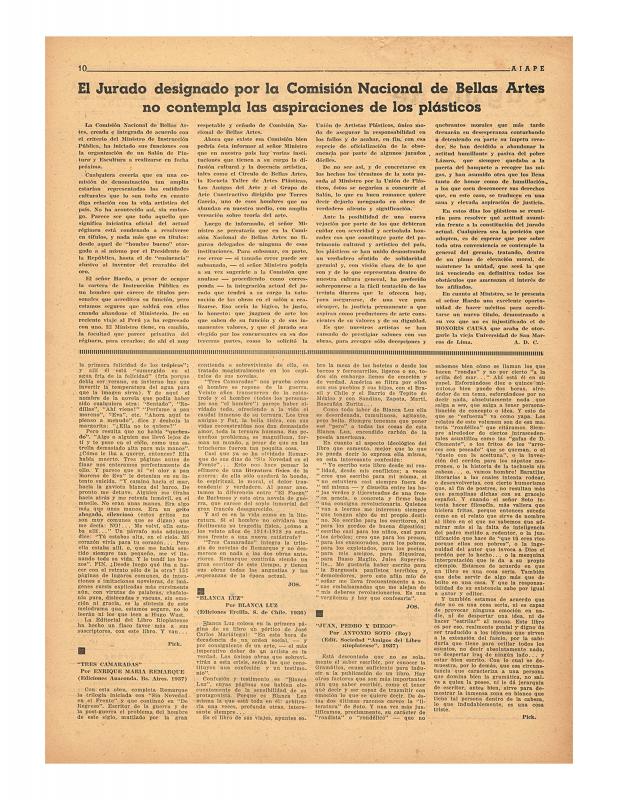On April 4, 1935—two years after the military coup staged by Gabriel Terra (March 31, 1933)—the Unión de Artistas Plásticos del Uruguay (UAPU) was created in Montevideo; by the end of its first year, the union had almost one hundred members. The organization did not have a clear ideological stance, but was envisioned as the voice of artists before the government; it called for a series of measures that would afford artistic practices greater social visibility, as well as greater participation of artists in juries for art competitions and in decisions regarding the production of the State’s public art projects (sculptures, murals, etc.).
The information in this text comes from primary sources, mainly originals of the minutes from the UAPU’s meetings; the explanation of the UAPU’s short life, on the other hand, is formulated by the author. It seems that the range of ideological positions among the UAPU’s members, as well as very different personal motives for joining the association, was responsible for its break up, which occurred when the government created the Comisión Nacional de Bellas Artes [see in the ICAA digital archive issued by the executive power, Montevideo, Uruguay, “Decreto del P.E. que instituye la Comisión Nacional de Bellas Artes” (doc. no. 1186589)] and named jurors for the Primer Salón Nacional [see by Atahualpa del Cioppo “El jurado designado por la Comisión Nacional de Bellas Artes no contempla las aspiraciones de los plásticos” (doc. no. 1225373)].
Significantly, Joaquín Torres García presided over the UAPU’s first general assemblies, even though that seems to contradict the artist’s frequent statements that organizations and meetings of that sort were bureaucratic and had no place in the artist’s true social mission. It is important to bear in mind that, in 1934, Torres García visited President Terra to request funding for his project, which he was awarded by the Ministerio de Instrucción Pública for a period that extended into the forties. It is likely that the artist’s economic dependence on the government starting soon after he returned to Uruguay was decisive to his contradictory stance on artists’ collective initiatives, as well as his ambiguous position when it came to making demands of the executive power. The source of the quote that closes the article is not given. The article also includes a letter from Torres García to the Ministerio that attempts to take distance from the organizers of the Salón Independiente [see by the Ateneo de Montevideo “1er Salón Independiente de Artes Plásticas [agosto 1937]” (doc. no. 1186701)]. The spirit of the quote is consistent with the artist’s contradictory behavior during this early period [see by Joaquín Aroztegui “1er Salón Independiente, la UAPU y la CNBA” (doc. no. 1198061)].




